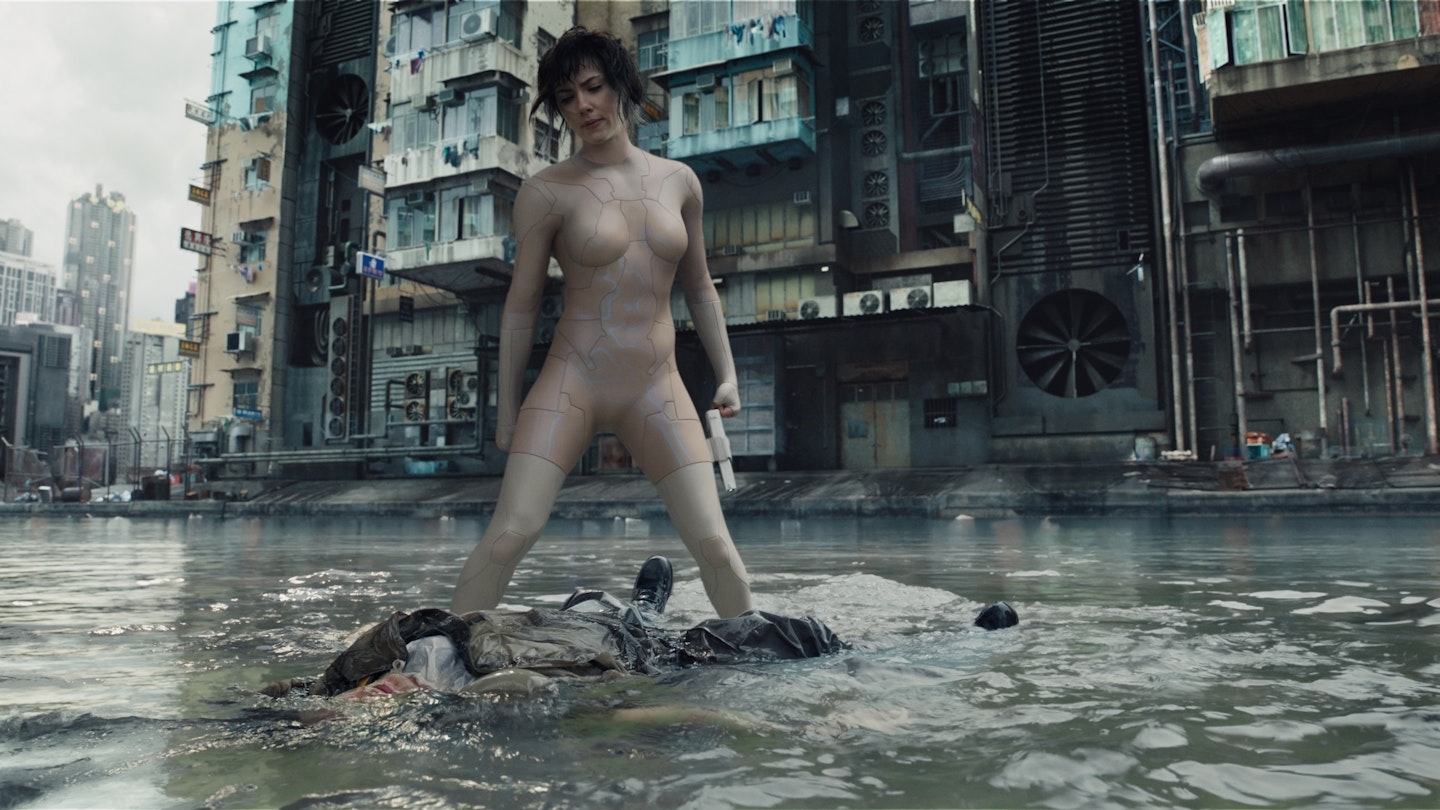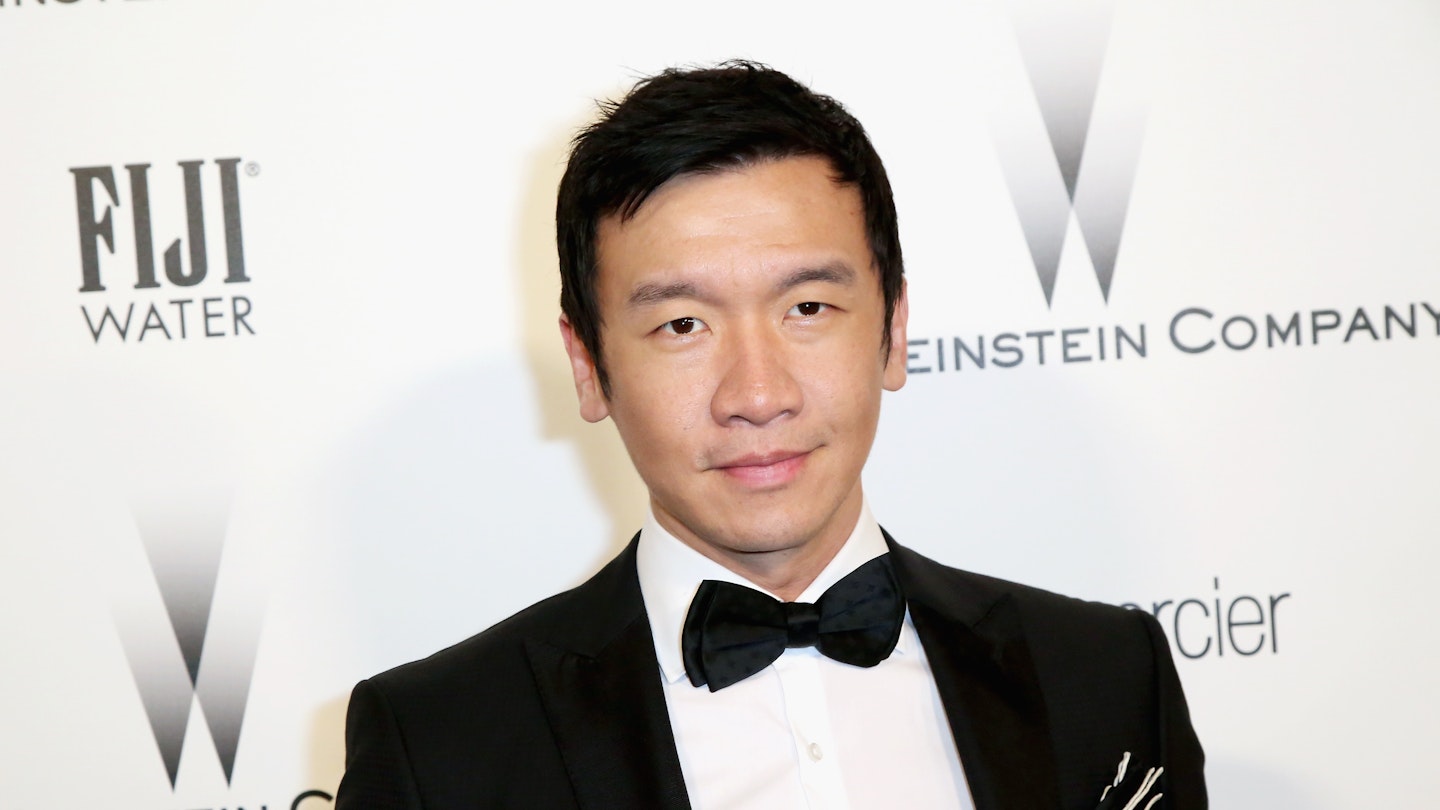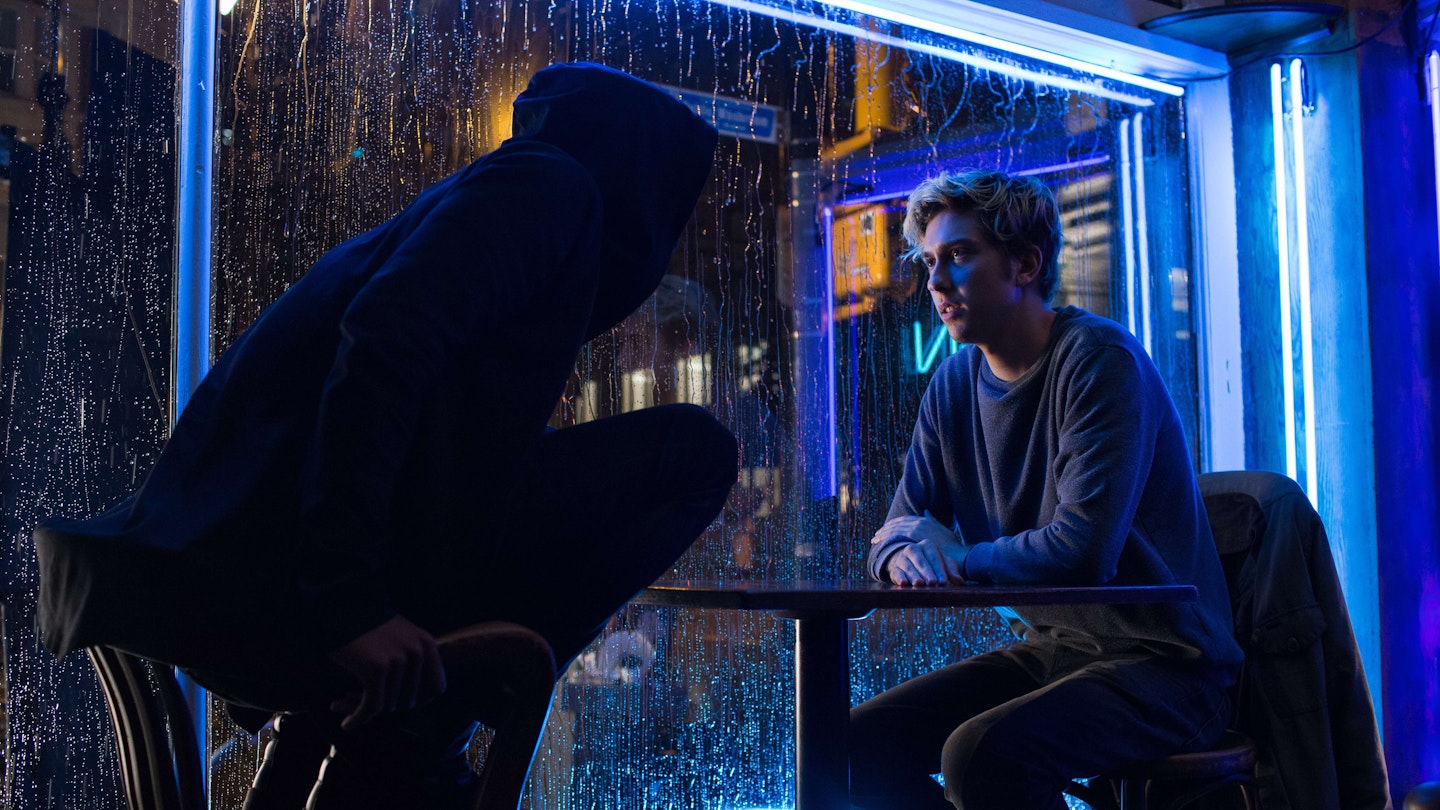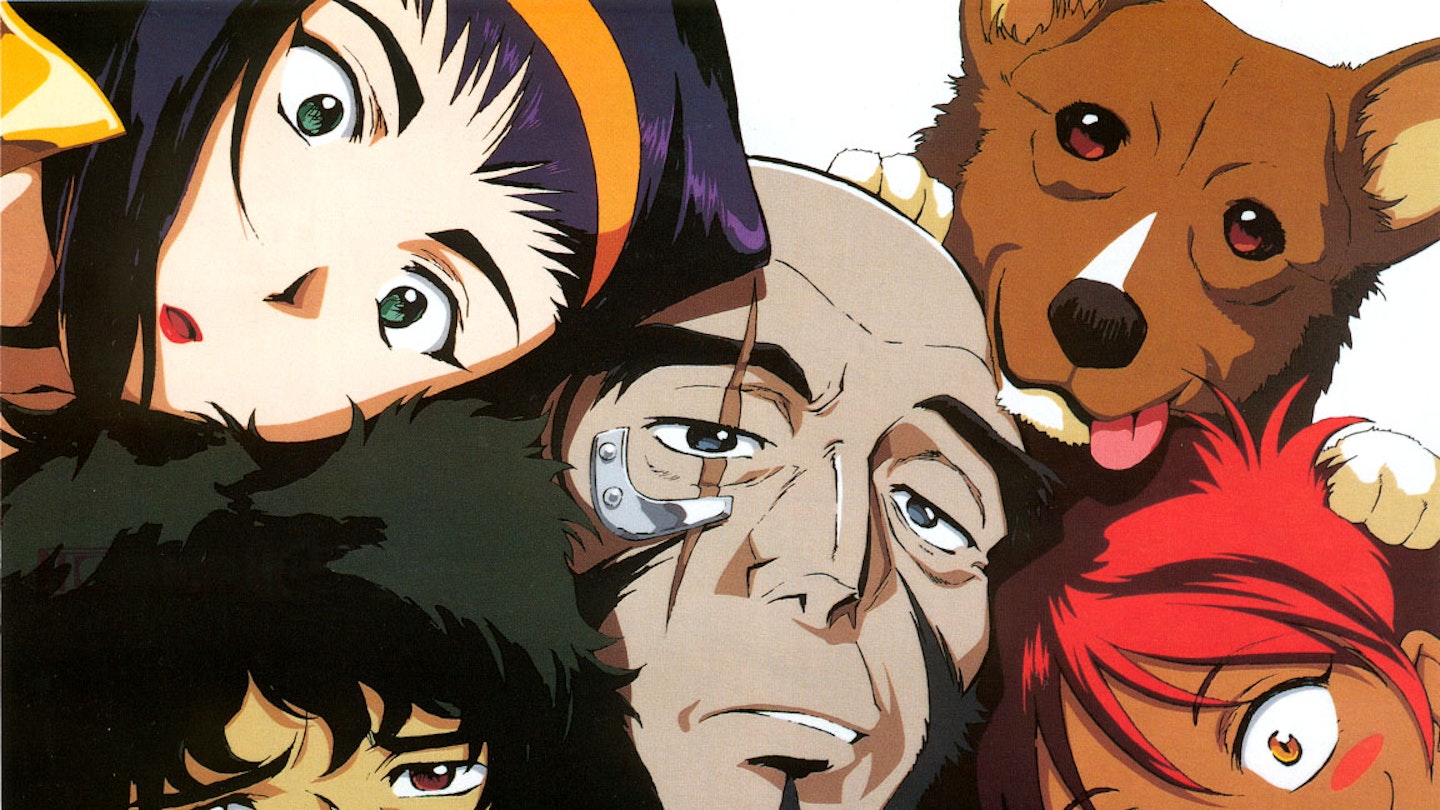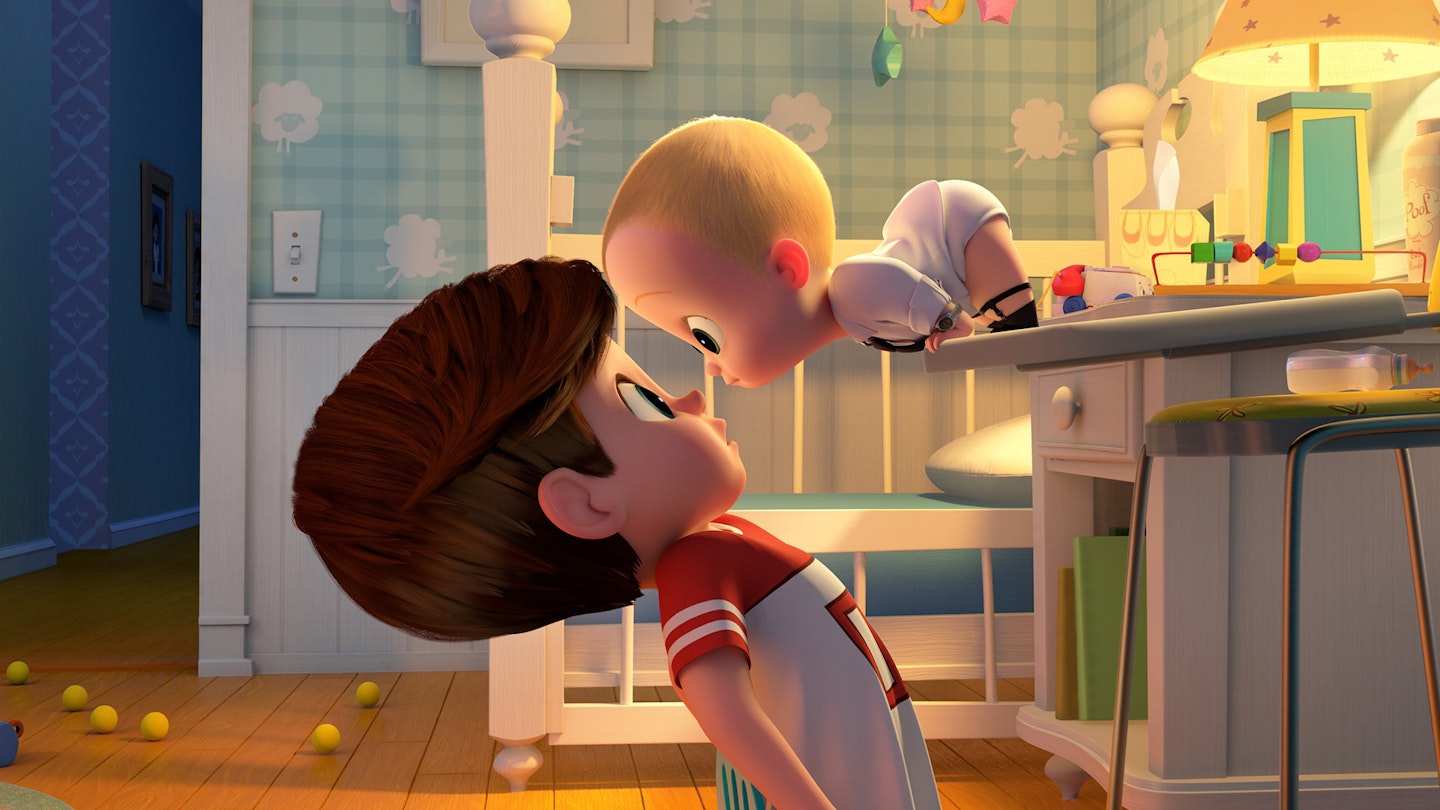In 1995, Japanese director Mamoru Oshii released a manga-adapting anime which asked searching questions about what makes us human while serving up astonishingly slick and inventive hi-tech action sequences. Ghost In The Shell was a deserved crossover phenomenon, earning its comparisons with the likes of Blade Runner and paving the way for The Matrix ("We wanna do that for real," was the Wachowskis’ pitch).
That it took over 20 years for Hollywood to reskin it for live action isn’t that surprising; after all, weren’t there already enough science-fiction pictures out there that shared its neon-tinged hardwiring? Perhaps it's been long enough for an audience to glide over the advertisement-dominated, skyscraperscape of the 2017 Ghost In The Shell and not feel like it's just Blade Runner re-scanned. Or that the Major's psychic tussle to recover the truth of her life before she became a hard-bodied, crime-fighting, walking weapon is just another version of Murphy's struggle in RoboCop. But if you're a longstanding fan of this genre, then the original’s deep, abiding influence on Hollywood (beyond The Matrix there's A.I.: Artificial Intelligence, Minority Report, Avatar, hell, even HBO’s Westworld) makes its remake feel derivative of so many movies other than its source material.
So preoccupied with the shell, it forgot to bring enough ghost.
Of course, familiarity can often encourage nostalgia, and that’s not hurt by the fact that Ghost In The Shell ’17 is a cogently constructed entertainment. Director Rupert Sanders is an adept world-(re)builder and visualist, as proven by his debut Snow White & The Huntsman, which at least looked great. His reconstruction of the original’s key set-pieces, including the urban lagoon slugfest with an invisible Major, and the climactic showdown with a ‘Spider Tank’ (think ED-209 crossed with a Starship Troopers Tanker Bug), is impressive.
He’s also cast the film appropriately; for all the accusations of ‘whitewashing’, there’s diversity here, with a Dane (Borgen’s Pilou Asbaek) as the lens-eyed Batou, a Singaporean (Chin Han) as mulletted cop Han, and Japanese cinematic legend ‘Beat’ Takeshi Kitano as sly boss man Aramaki. As for Johansson in the lead role, the film’s concept (present in the original) is that her body is an artificially produced construct; it would have been a welcome and progressive move to put an Asian actor in the role, but Johansson fits it well in the sense that the Major’s “shell” (i.e. body) is conceived in this script as something that isn’t a natural fit for the character, or rather the character’s “ghost” (i.e. soul).
There is definitely something ‘off’ about Johansson’s Major; a disconnect between her physical form and her true self. She’s been here before as an actor. There are close parallels to her performance in Under The Skin, where she played a predatory alien in a human form of limited functionality, and also shades of the super-woman Lucy, not to mention Black Widow from the Marvel movies (though there she was a different kind of programmed killing machine). But here she adopts a different physicality: hunched and heavy-footed, as if every movement is a heavy burden. There is a faint hint of Frankenstein’s Monster in her surly stride.
That said, there’s also a blankness that the original Major lacked. Oshii’s version was well settled in her shell, an apparent volunteer rather than an unwitting guinea pig, with a zest for her work. The ’17 iteration’s exposition-heavy script (by Jamie Moss, William Wheeler and Ehren Kruger) requires Johansson to do little more than furrow her brow while mostly either lying on a lab gurney or kicking some ass. There is a frustrating absence of personality which means, for all her physical presence, this Major’s just not very engaging. It’s more a problem with the film than Johansson herself. A case, if you will, of it being so preoccupied with the shell, it forgot to bring enough ghost.
